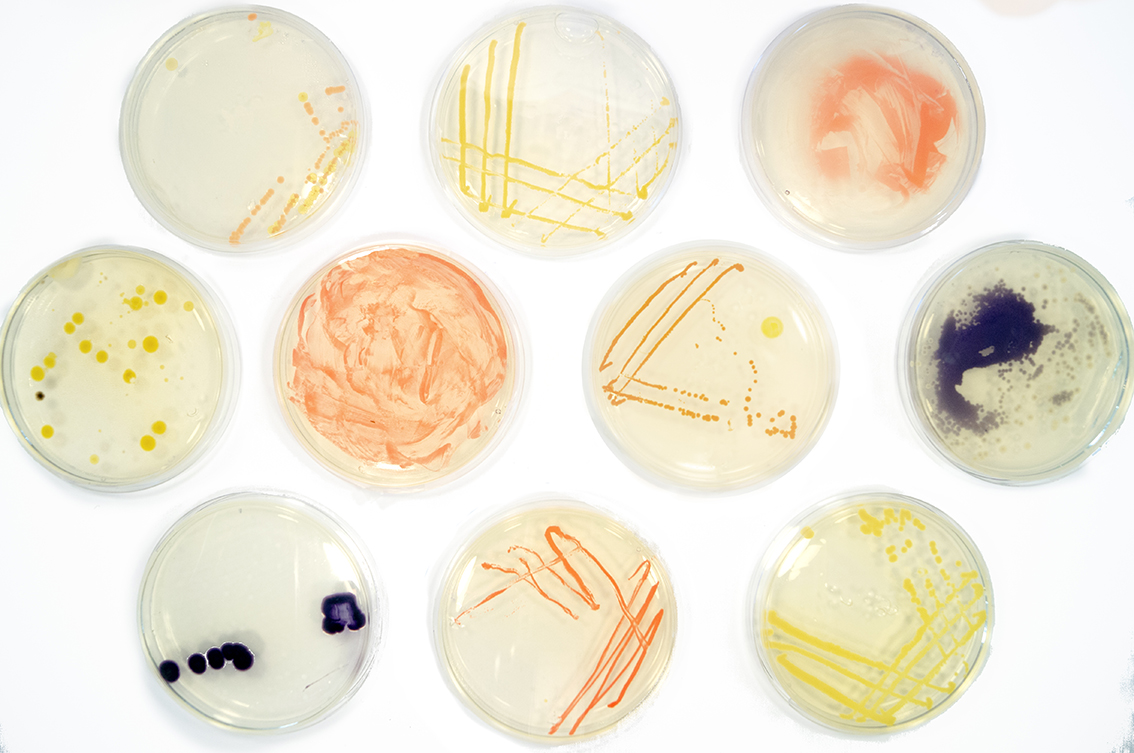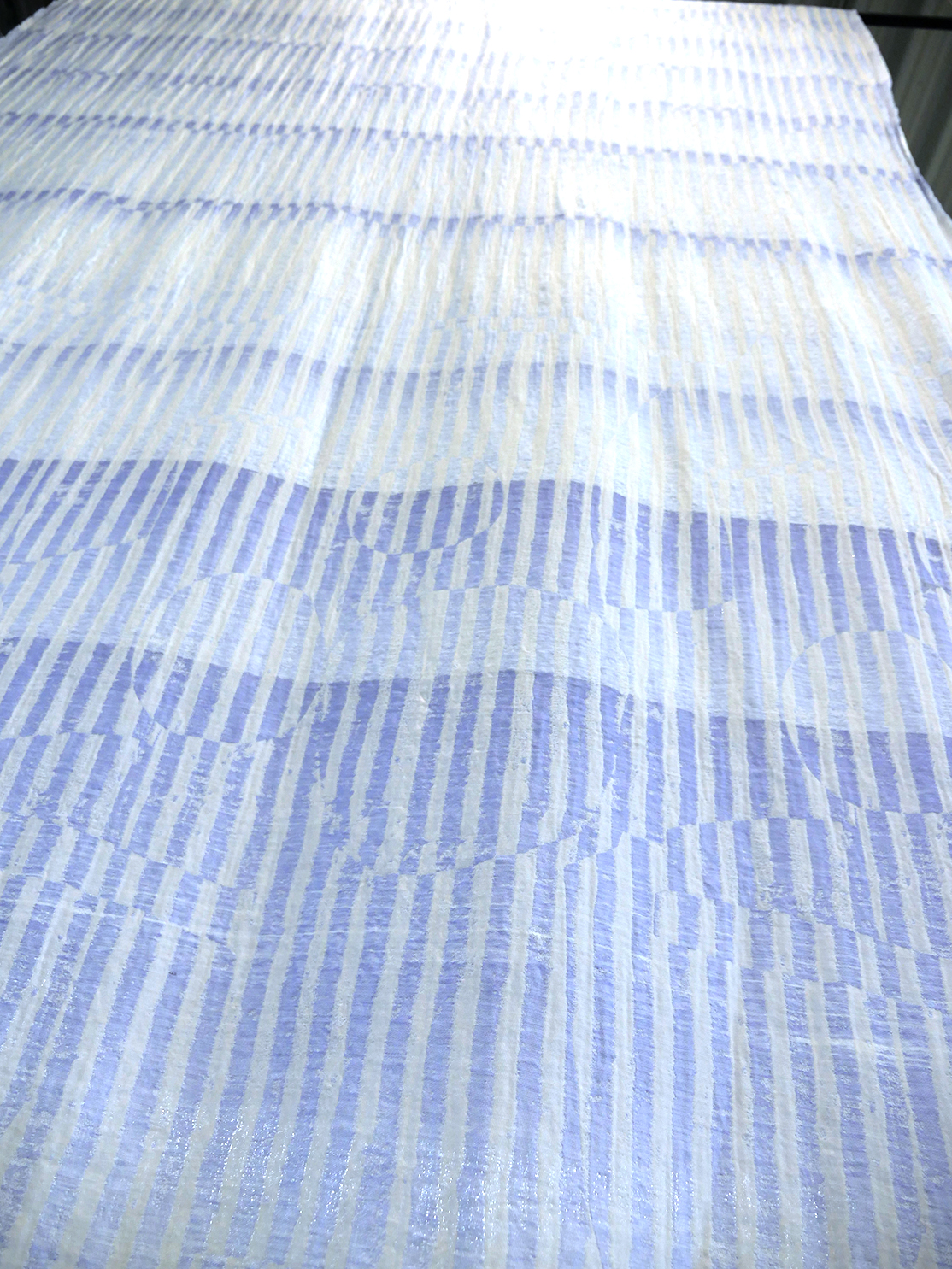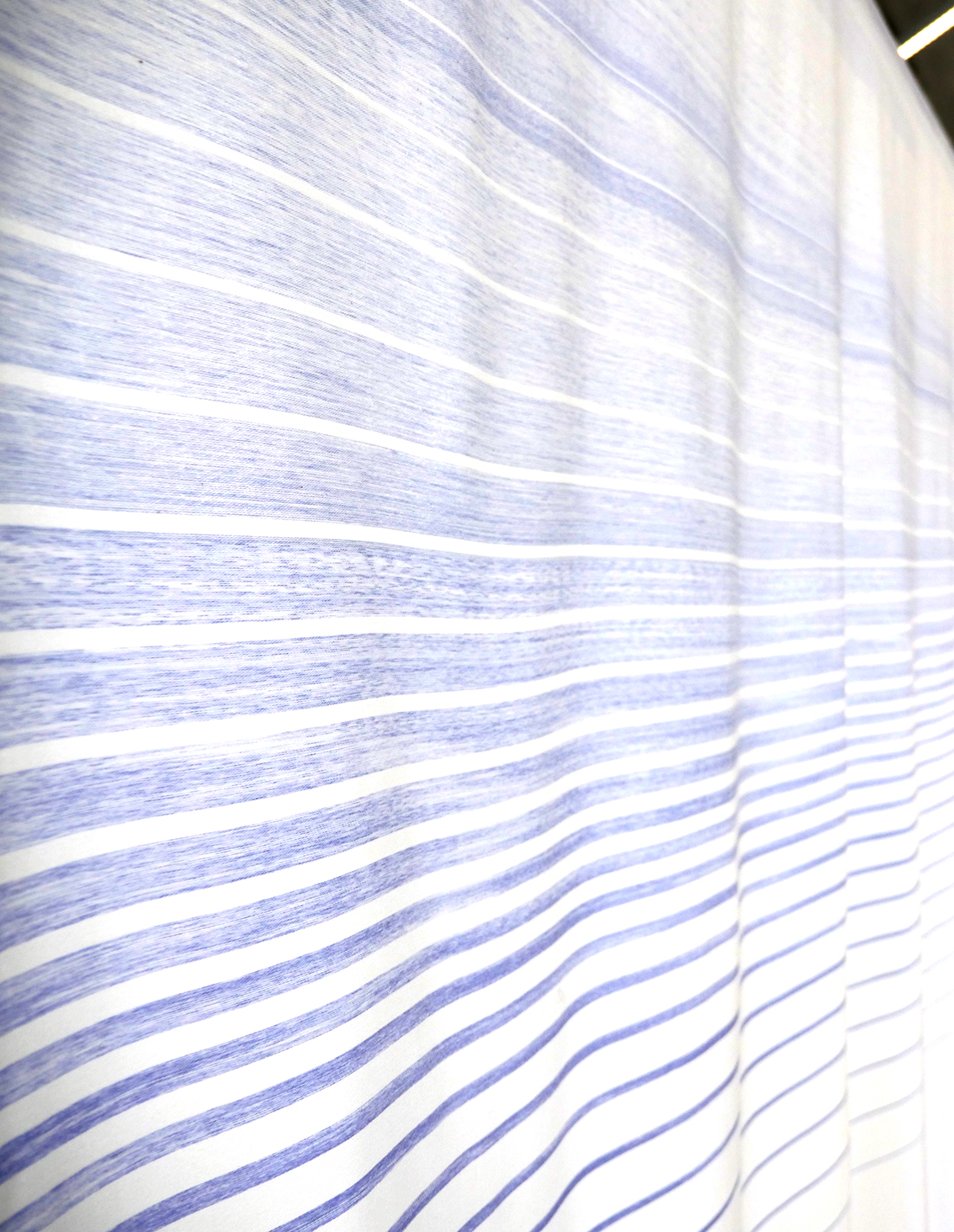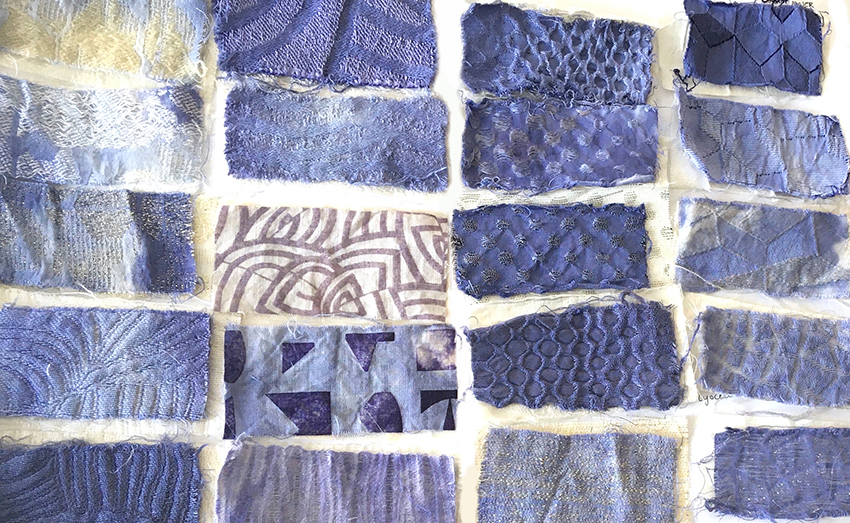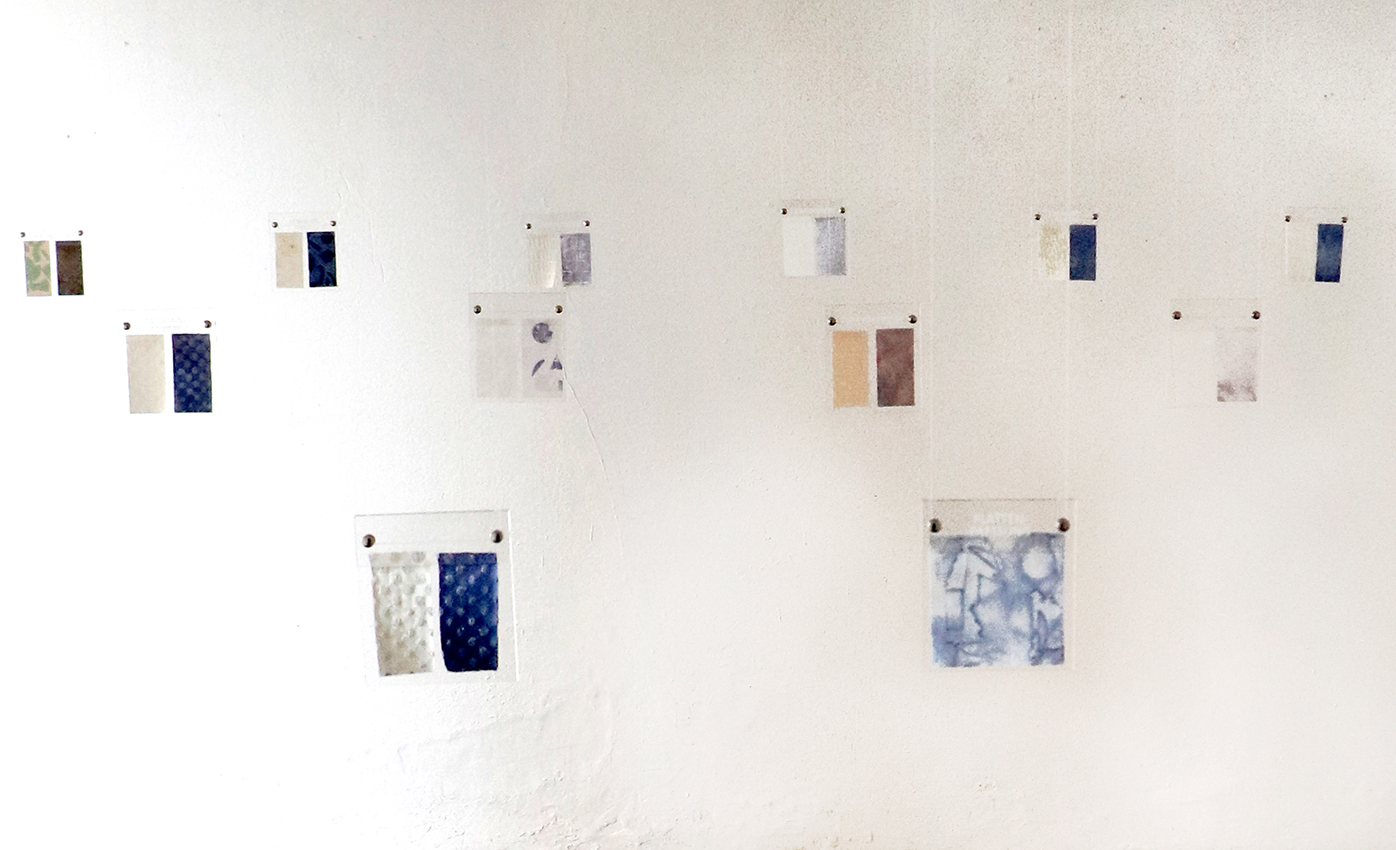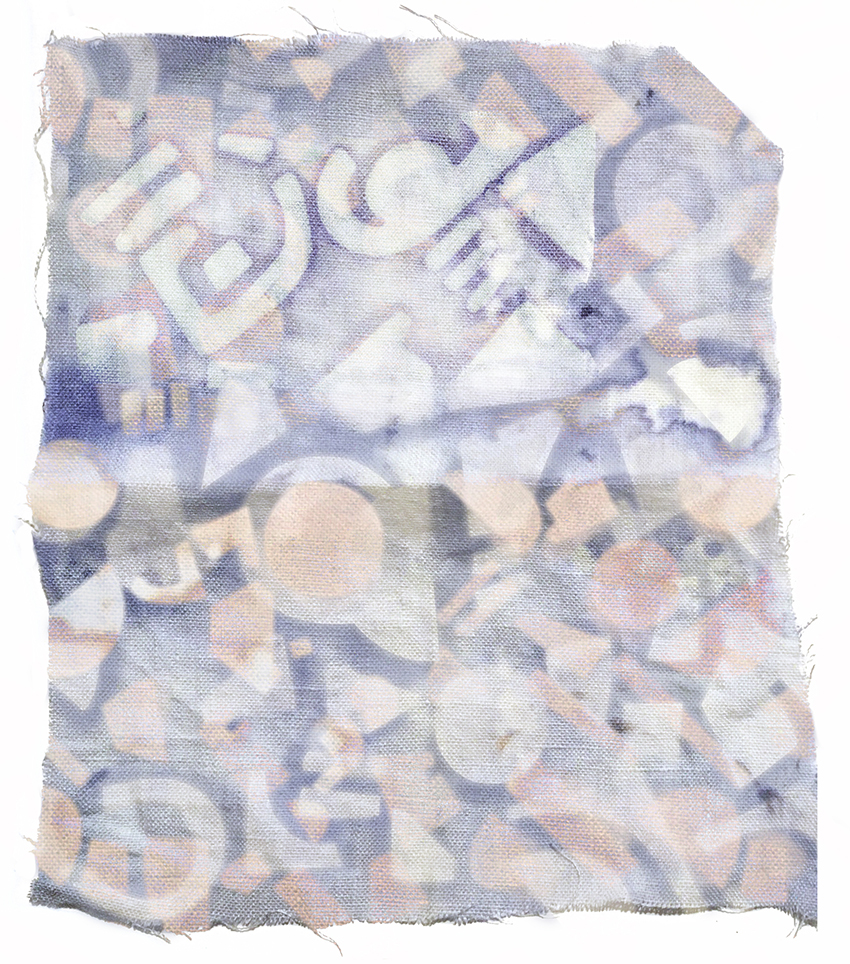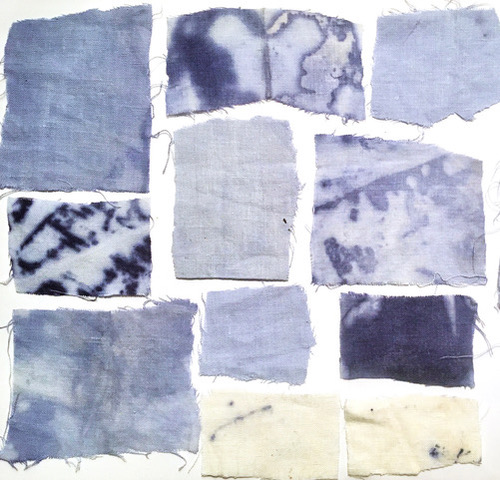Bacteria are invisible to the naked eye and yet they occur everywhere in our environment. You can find them in the air, in the soil, in water, in ice, in plants, in animals and humans. Even though only a small percentage of bacteria found in nature is able to cause illness in humans, their image is extremely tarnished. Yet many bacteria carry great potential. While bacteria are increasingly used in the food industry in fermentation processes, they could also play an important role in the textile industry. Not only to neutralize toxins from polluted waters in the dyeing industry, but also for the dyeing process itself. In our project, we demonstrate the possibilities of bacterial pigments for dyeing textiles in different colors, shapes and patterns and illustrate the presence of the bacteria of our environment by revealing their colors. The combination of this resource-saving and environmentally friendly dyeing method with new technologies opens up completely new possibilities to make the world not only more colourful – bluer, yellower or redder – but also a bit „greener“ and thus more sustainable.
According to McKinsey & Company‘s report „Biodiversity: The next frontier in sustainable fashion“ 12–20% of all species are under threat of extinction, with the apparel industry playing a significant role in this biodiversity loss. As the report points out, „the apparel supply chains are directly linked to soil degradation, conversion of natural ecosystems and waterway pollution.“ Water is considered one of the most basic substances used in the production and processing of textiles. To produce and finish 60 billion kilograms of textiles every year, about 35 trillion litres of water are needed. If the fabrics are also dyed, the dyeing process itself requires about 40-65 litres of water per kilogram of product, depending on the fibre and dye. In her film „River Blue“ creative director of Fashion Revolution Orsola de Castro describes the tremendous pollution of waterways by the textile industry in following quote: „There is a joke in China that you can predict the ‚it‘ colour for the season by looking at the colour of the river.“ Since 1856 when Sir William Henry Perkin developed the first synthetic dye, natural dyes rapidly disappeared from the market, which meant to apply high amounts of health and environmental threatening chemicals too. Already in 2010, the textile industry was the world’s largest consumer of chemical dyes, with 500 to 600.000 tonnes. After the dyeing process, only 85-90% of the dyestuffs are able to remain in the fabrics with almost all the rest being discharged in waters without neutralization due to lack or disrespect of regulations in countries with the biggest textile industries. This leads to the change of colour de Castro is mentioning. As can be seen in colour spectacles of various waters, colour changes of water are not always caused by men, but can also occur due to bacteria or other microorganisms. Lake Hillier in Australia, Las Coloradas in Yucatán/Mexico or Lake Retba in Senegal, but also lakes like Alatsee in Germany receive a beautiful bright colour caused by microorganisms.
But even if the bacteria are not visible like in those lakes and therefore invisible to the naked eye, they occur everywhere in our environment. You can find them in the air, in the soil, in water, in ice, in plants, in animals and humans. Even though only a small percentage of bacteria found in nature is able to cause illnesses in humans, their image is extremely tarnished. Yet many bacteria carry great potential. While bacteria are increasingly used in the food industry in fermentation processes, they can also play an important role in the textile industry. Not only to neutralize toxins from polluted waters in the dyeing industry, but also for the dyeing process itself.
Chromogene bacteria like those living in the above mentioned waters can be used for dyeing textiles, which is a sustainable, resource- and especially water-saving alternative to traditional dyeing methods, that requires no harmful chemicals. In our project, we demonstrate the possibilities of bacterial pigments for dyeing textiles in different colours, shapes and patterns and illustrate the presence of the bacteria of our environment by revealing their colours. We use pigment bacteria from databases as well as self-collected bacteria from the area of the Johannes Kepler University in Linz. By doing so we aim to create a connection between human and bacteria and a positive image upon them as well as revealing their presence and aesthetic value. Their colours are vivid and appear to be perceived particularly harmonic due to the presence of numerous hues. In our project we use living bacteria to grow on yarns and fabrics as well as extracted pigments from bacteria. Our mission is to enhance the (aesthetic) possibilities of textile bacteria dyeing to generate a broader application field for this technique to be able to compete with other dyeing methods. In combination with traditional and modern technologies we are proposing innovative solutions for working with bacterial pigments. Our project shows that bacterial pigments can be used for dyeing yarns and weaving of multicoloured textiles, but also for transfer printing or reserve techniques with modern technologies like UV- or 3D-printing.
The combination of this resource-saving and environmentally friendly dyeing method with new technologies opens up completely new possibilities to make the world not only more colourful – bluer, yellower or redder – but also a bit „greener“ and thus more sustainable.
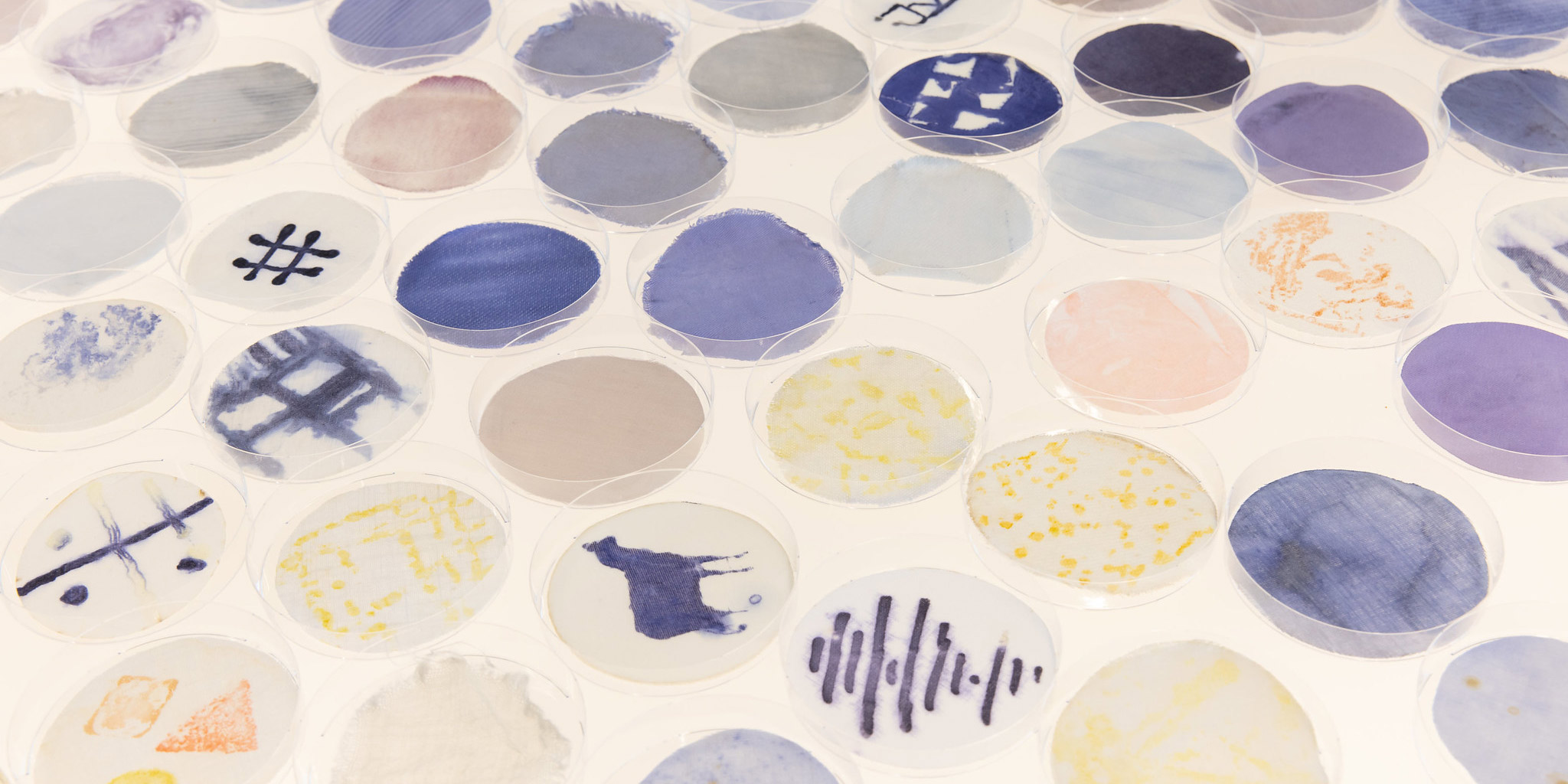
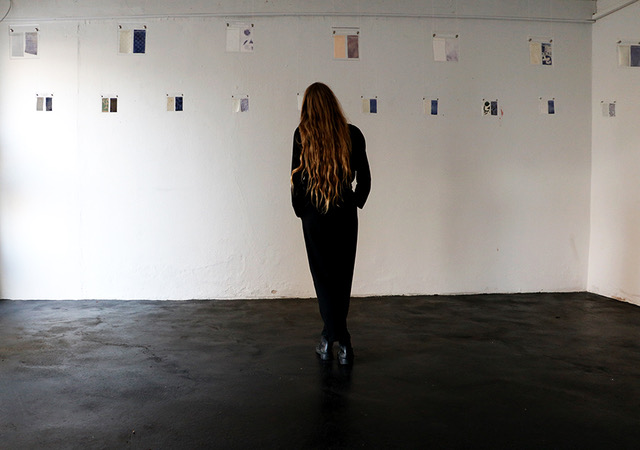
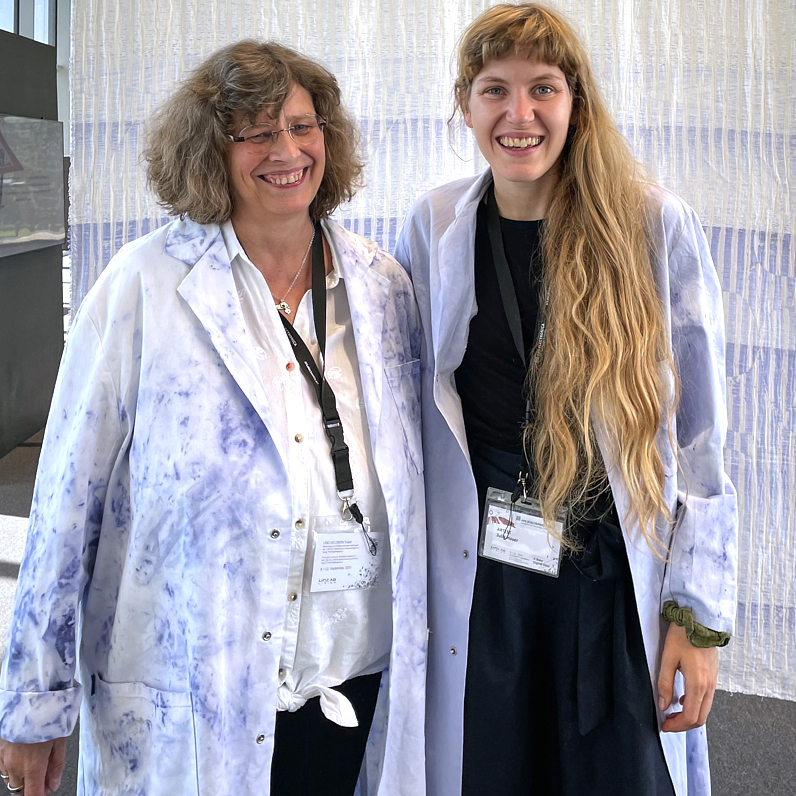
Julia Moser, Sabine Hild, Patrik Radic, Laura Holzinger, Julia Halasz, Yuti Kainz, Mantas Indriliunas, Leon Kainz, Karin Fleck, Mascha Rauscher, Erich Schopf, Textiles Zentrum Haslach
Linz, Austria
„Unity is strength…when there is teamwork and collaboration, wonderful things can be achieved.“
Our interdisciplinary team reflects future and already present developments in the design field. We see the future of design in a transdisciplinary exchange of design, science and biology. Starting from fundamental issues that affect nature and people alike, we try to provide solution approaches that can only come about through the cooperation of people from a wide variety of fields.
The core of our project team consists of employees from the fields of chemistry, polymer science, microbiology and textiles/fashion. Dyeing with pigment bacteria deals with areas of microbiology. However, the combination of dye and fibre requires a lot of knowledge from chemistry. The treatment of fabrics with different agents and substrates and surface structuring, as well as further investigations, applies knowledge from the areas of competence of the Institute of Polymer Science. At the same time, textile and design issues play an essential role. Therefore, the idea for the project came from the fashion sector and was coordinated with a focus in this direction. Moreover, our team is supported by other project partners like the bacteriograph Erich Schopf, the Vienna Textile Lab and the Textile Centre Haslach.





